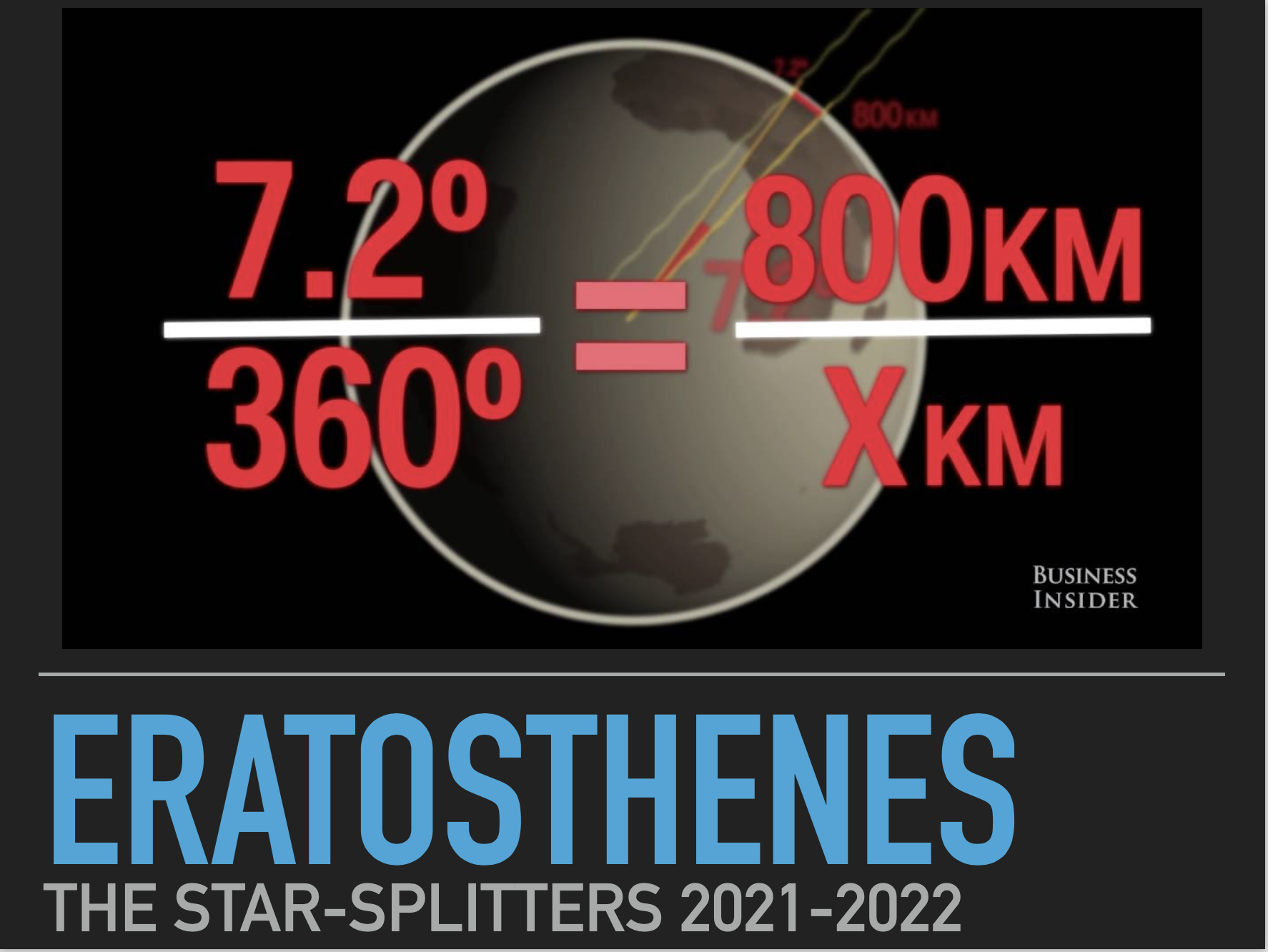Ancient Tools of Mathematics and Physics
During our final weeks of the 2021-2022 school year, we engaged in an extended deep-dive on history, mathematics, culture, mechanics, and composition.
Our studies took us from ancient Sumer, where a base-60 numerical system gave rise to a 360-degree circle, to ancient Ionia, where Thales developed a geometry and trigonometry based upon that understanding, to ancient Egypt where Eratosthenes took the measure of the world by exercising that understanding. We learned and practiced the ways that both ancient thinkers used the tools at hand, in tandem with their rigorously imaginative minds, to extend their vision of the physical world: one used a stick, shadows, and light to discern the height of a Great Pyramid; the other determined with amazing accuracy the radius and the circumference of the Earth by observing shadows and extrapolating from the data he recorded.
In this portion of the class, we learned concepts of geometry and trigonometry. We learned about congruent angles and triangles, about the properties of parallel lines when crossed by a transversal, about the tangent function in trigonometry and some of its practical uses.
Students demonstrated their understanding by reenacting Thales' experimental methods in our place and by conducting (and inventing) angle of elevation problems, as well as by exercising their understanding of the concepts on a final exam.
We then moved into a study of six simple machines of physics: the lever, the pulley, the wheel and axle; the inclined plane, the wedge, the screw. Students learned historical aspects of the machines, how the machines work, and about the physics of their actions, including such concepts as work as a measure of force and distance; the conservation of energy, the idea of work in equaling work out, ideal mechanical advantage (and how to calculate it for each simple machine), and actual mechanical advantage.
Students demonstrated their understanding via class discussions and in-class exercises, and then via an open-outline, open-binder test.
After The Star-Splitters read Beowulf last October, they embodied their understanding of implicit and explicit textual evidence by making models or drawings of the fearsome monster Grendel. Henry said his Grendel was as tall as a telephone pole. How tall is that, we wondered. This week, we've been studying the scientific minds and experiments of Thales and Eratosthenes, the ways in which these ancient liberal artists took the Earth's measure by using simple tools (sticks, light, shadow), a rigorous curiosity, and a keen understanding of geometry. Today, we discovered the height of Henry's Grendel--roughly 25 feet!--, using our knowledge of triangles and tangents, angles of elevation and algebraic equations, and the inclinometers we made by hand.
After The Star-Splitters read Beowulf last October, they embodied their understanding of implicit and explicit textual evidence by making models or drawings of the fearsome monster Grendel. Henry said his Grendel was as tall as a telephone pole. How tall is that, we wondered. This week, we've been studying the scientific minds and experiments of Thales and Eratosthenes, the ways in which these ancient liberal artists took the Earth's measure by using simple tools (sticks, light, shadow), a rigorous curiosity, and a keen understanding of geometry. Today, we discovered the height of Henry's Grendel--roughly 25 feet!--, using our knowledge of triangles and tangents, angles of elevation and algebraic equations, and the inclinometers we made by hand.
As we continued our study of triangles and tangents to help us understand the minds of Thales and Eratosthenes, we decided to invent our own angle of elevation problems. Here are a few wonderfully mathematical stories.
From Abby's final exam, exemplifying The Star-Splitter Academy's emphasis on creating clear pictures of concepts we cover.
























